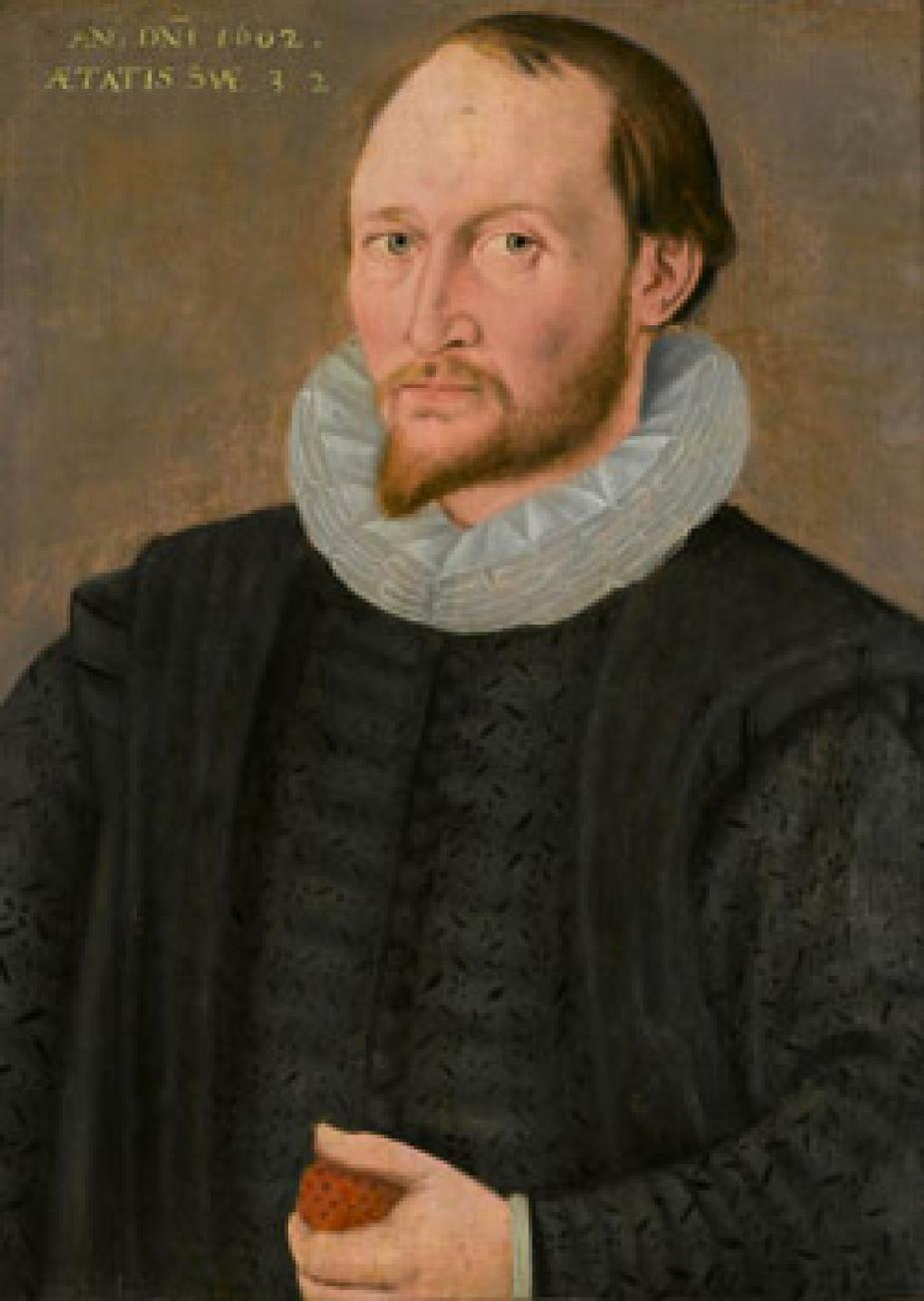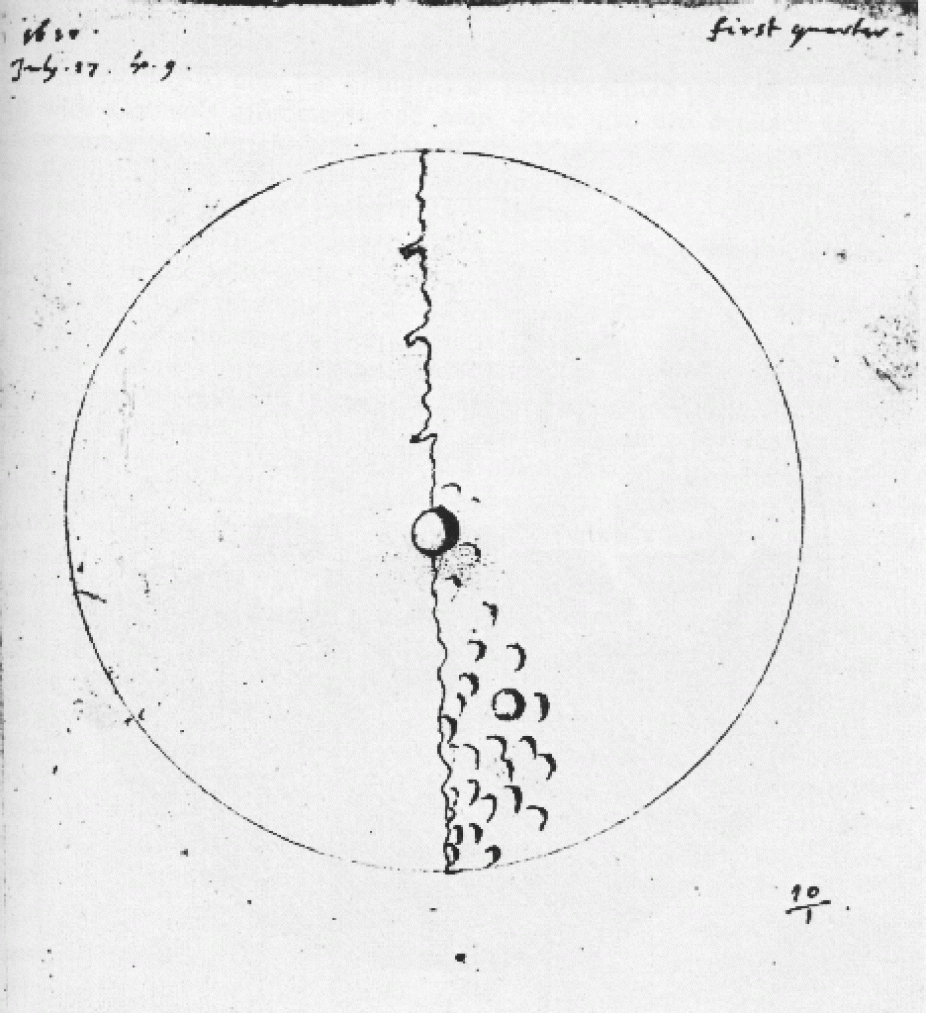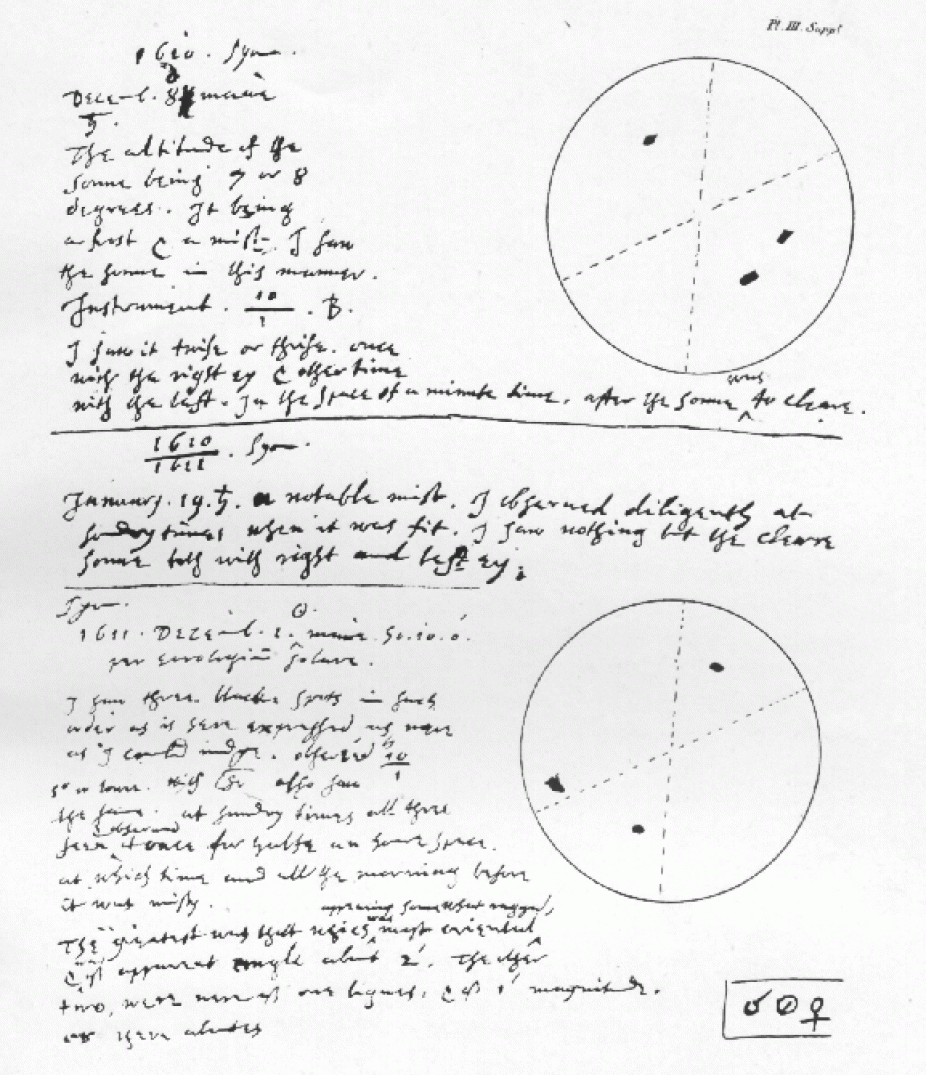Thomas Harriot (1560–1621)
Born in 1560, Thomas Harriot spent his life under the patronage of wealthy nobles, first by Lord Walter Raleigh upon graduating from Oxford, and then starting in 1593 by Henry Percy, Earl of Northumberland.

Painting of Thomas Harriot.
Wikipedia
Harriot kept regular correspondence with other scientists and mathematicians, especially in England but also in mainland Europe, notably with Johannes Kepler. For unknown reasons, Harriot refrained from publishing most of his scientific work, with the exception of his observations as scientist to Lord Raleigh's 1585 expedition to the New World, published in 1588. He however left many notebooks of scientific observations, which were only uncovered much later in the late eighteenth century, and not properly studied for another 100 years thereafter.
Harriot's early telescopic observations rival those of Galileo and contemporaries. Starting in July 1609 he observed the moon regularly, apparently for the purpose of determining the distance of the Sun using Aristarchus's method, as evidenced by the numerous drawings of the Moon at first and third quarter later found in his notebooks.
On the basis of surviving historical documents, it appears that Harriot was the first to observe sunspots, as evidenced by entries in his notebook dated December 8, 1610. This is the earliest known pictorial record of sunspots. Harriot left nearly 200 drawings of sunspots from the period 1610–1612. (Following the dispute with Christoph Scheiner, Galileo claimed that he had been observing sunspots since the summer of 1610, but no direct written evidence has been found to support this claim). However, Harriot subsequently failed to pay much attention to sunspots until a year later. After reading Galileo's Sidereus Nuncius he also observed the satellites of Jupiter, but as with sunspots, Harriot failed to grasp (or at least make note of) the physical significance of his observations.
Throughout his life Harriot pursued extremely original research on the refraction of light, binary mathematics, ballistics, spherical geometry, cyphers and codes, and algebra. He is now credited with independent discovery of the sine law of refraction, first published by René Descartes but earlier discovered, again independently, by Wilbrod Snell. His accurate observations of the 1607 comet were used much later, in 1784, by Friedrich Wilhelm Bessel to compute the comet's orbital elements, which led to the realization that the 1607 comet was in fact Halley's comet. Harriot died on July 1, 1621 in London.
Bibliography
Chapman, A. 1995, Q. J. R. Astr. Soc., 36, 97-107.
Herr, R.B. 1978, Science, 202, 1079-1081.
Shirley, J.W. 1982, Thomas Harriot: a biography, Oxford: Oxford University Press.
Harriot's Drawings and Observations
Drawings of the Moon

Moon drawing by Thomas Harriot.
Compare Thomas Harriot’s with Galileo's Moon drawings. The preponderance in Harriot's notebook of drawings of the Moon made at first and third quarter suggests that he was attempting to establish the distance to the Sun using the method of Aristarchus.
First sunspot observations

Entries from the notebooks of Thomas Harriot, dated December 8, 1610. Reproduced from the paper by W.M. Mitchell cited below.
This is the earliest known pictorial record of sunspots. Harriot left nearly 200 drawings of sunspots from the period 1610–1612. One exerpt reads:
"December 8 mane ho. That altitude of the sonne being 7 or 8 degrees. It being a frost & a mist. I saw the sonne in this manner. Instrument 10/1 B. I saw it twise of thrise. Once with the right eye & other time with the left. In the space of a minutes time. After the sonne was too cleare."
Interestingly, the text does not mention the spots explicitly, even though they are clearly indicated on the drawing. Like the Fabricius father and son team but unlike Galileo and Scheiner, Harriot observed the sun directly through his telescope. His observations were consequently limited to the hour following sunrise, when, as seen from Harriot's residence in Syon, the Sun was greatly dimmed by mist and fog over the river Thames.
Bibliography
Bloom, T.F. 1978, Journal for the History of Astronomy, 9,177-122.
Mitchell, W.M. 1916, The History of the discovery of the solar spot, Popular Astronomy, 22-ff.
Shirley, J.W. 1982, Thomas Harriot: a biography, Oxford: Oxford University Press.